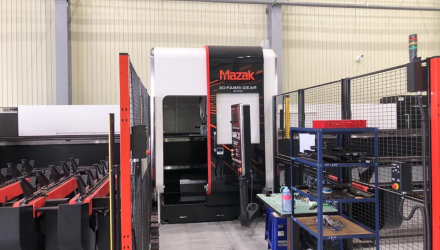Technology

2D and 3D Metal Laser Cutting and Application Areas
2D and 3D metal laser cutting are key technologies in modern industry, offering high precision, efficiency, and flexibility. They are applicable to various metal materials and application fields. Below are the distinctions and application areas for each:
2D Metal Laser Cutting
Principle:
2D laser cutting mainly focuses on flat metal sheets, with the laser beam moving along the X and Y axes to perform precise cuts. This technique is commonly used to cut metal sheets of different thicknesses and is suitable for simpler shapes and contours.
Application Areas:
• Sheet Metal Fabrication:
Ideal for manufacturing metal housings and frames, used in home appliances, electronic equipment enclosures, and elevator panels.
• Building Materials: Used to produce construction steel plates, railings, wall panels, and other metal components.
• Automotive Manufacturing: Employed in cutting metal parts for vehicles, such as doors, frames, and brackets.
• Advertising Industry: Used to create metal letters and signs with precise, smooth cutting edges.
• Furniture Manufacturing: Suitable for making metal frames and decorative items like tables, chairs, and light fixtures.
3D Metal Laser Cutting
Principle:
3D laser cutting operates along the X, Y, and Z axes, capable of processing complex 3D metal structures. It extends beyond flat cutting and allows precise cuts in three-dimensional space, suitable for processing irregular parts.
Application Areas:
• Automotive Industry: Applied to cutting complex vehicle parts such as exhaust systems, frame supports, and vehicle crash bars.
• Aerospace: Used for high-precision metal parts like engine components and fuselage structures, providing lightweight yet highly precise results.
• Tube Processing: Capable of cutting metal tubes of various shapes in three dimensions, suitable for producing frame structures and piping systems.
• Medical Equipment: Used to manufacture complex metal medical instruments that require precision and high reliability, such as surgical tools and implants.
• Shipbuilding: Applied to cutting large metal parts for ships, such as hull frames and structural components.
• Machinery Manufacturing: Used for cutting complex machine parts, including precise industrial components such as robotic arms and gearboxes.
Key Differences Between 2D and 3D Cutting
2D Laser Cutting:
Focuses on flat materials, suitable for simple and fast cutting applications. It is relatively cost-effective and ideal for mass production.
3D Laser Cutting:
Used for three-dimensional or complex-shaped parts, offering higher flexibility and capable of handling multi-angle and multi-surface parts. It is suitable for high-precision, high-demand applications.
2D and 3D metal laser cutting technologies are widely applied in the automotive, aerospace, electronics, medical, and other industries, providing efficient and flexible solutions for processing various precision metal parts.